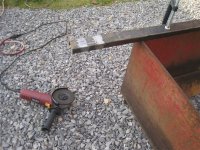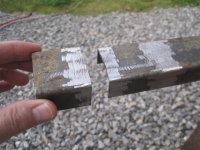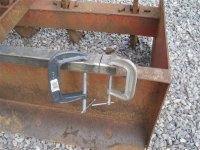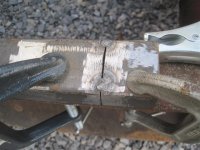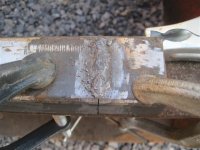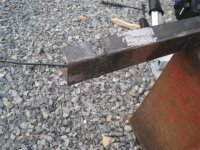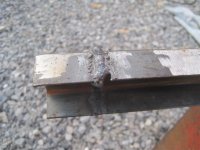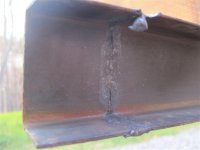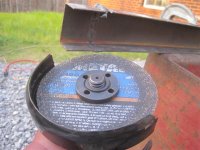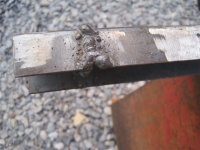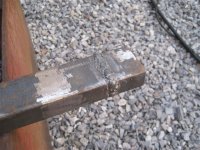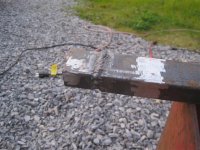I reoriented the metal and welded the first side. It came out fairly ugly. I'm having a little difficult starting a weld where I ended the previous weld. By the time I have heated the metal enough to get a puddle, I have a large glob of weld resulting from feeding the wire while I'm waiting for the metal to get hot.
How thick was the base metal, and what setting did you have the welder set to?
The metal doesn't look that thick, and when you are learning thinner metal can be a bit of a challenge.
You should have a puddle of molten metal VERY soon after striking an arc.
The last side came out even uglier. At the end, I melted away my metal leaving a large gap at the bottom.
It may be obvious, it may not... you burn though when you leave the torch in one place too long. That end of the piece weld goes faster than the in the middle of the weld.
I used the grinder to cut off the excess and then tried to fill in the gap by adding more welding wire. That didn't turn out too great either.
You can do that... you've burned a "U" in the end of the weld. Trace around the inside of the U once, and then stop. Let it cool. Clean the slag. Now you should have a smaller U. Trace around the inside of the U, cool, clean, repeat. Eventually the U closes up.
The downside to a flux-core welder, is you MUST clean your old weld before putting new weld over, or near the old weld. If you don't you'll get slag in the weld , and that will create a weak spot.
I think I should have left a slightly bigger gap between the pieces before I welded them to let a little more weld penetrate a little deeper.
What you do for deeper penetration on thick material is bevel the edges at a 45 degree. Then you weld straight down the middle. Then clean, and lay another pass on top. This time you weave a bit from side to side to make a wider weld. Repeat until full thickness welding has occurred.
If you have a very wide bevel, you might have to do 2 or more passes one on each side to fully cover the gap, but that is probably not something you are likely to get into with this welder.
My other suggestion is to practice laying good looking welds on a thick (so you don't burn through) flat plate. This will let you work out your hand motion, travel speed, machine settings etc... and get a good looking bead of weld. Once you can get a good bead, repeatably, then you can move to a work piece, and put that good bead where it needs to be.
Looking at your welds they are 'tall' i.e. standing up off the base metal. This is usually due to too fast of a wire speed. But it looks like on your machine you only have 1 control. Most mig machines have 1 for wire speed and 1 for voltage. So I'm not sure what to tell you to adjust as I've not worked with this kind of machine.
